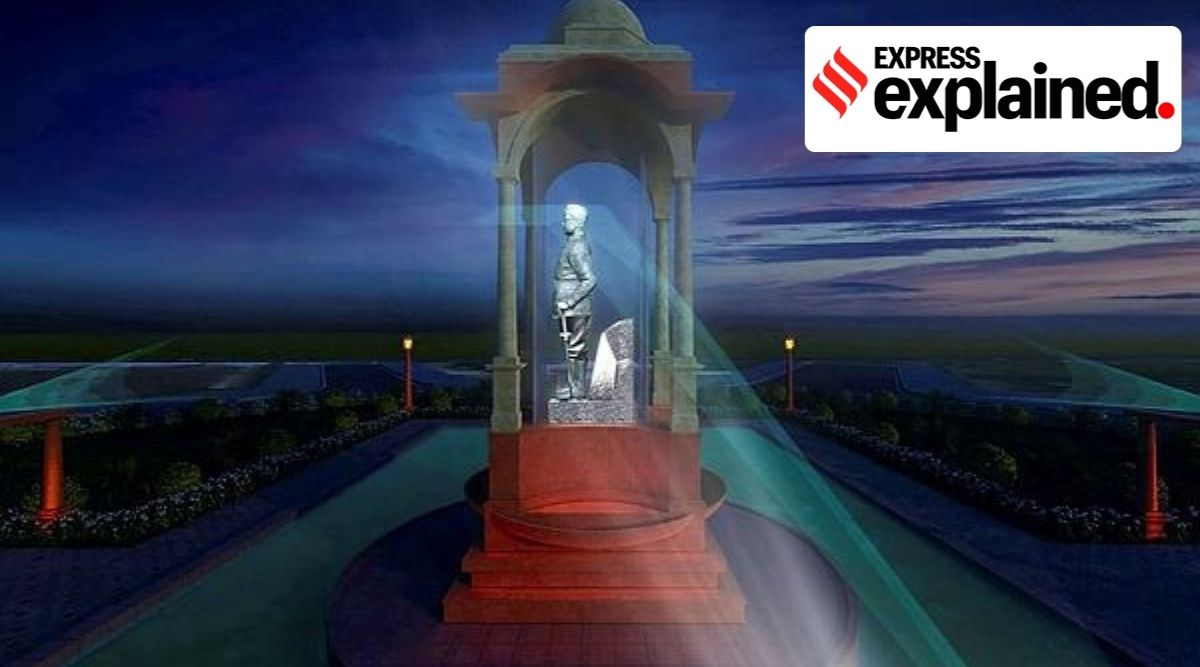
Prime Minister Narendra Modi on Friday announced that a statue of Netaji Subhash Chandra Bose will be installed at India Gate to honour his contribution to the independence movement. Until the installation is completed, a hologram of Netaji will be projected at the site of the statue.
The prime minister tweeted: “At a time when the entire nation is marking the 125th birth anniversary of Netaji Subhas Chandra Bose, I am glad to share that his grand statue, made of granite, will be installed at India Gate. This would be a symbol of India’s indebtedness to him.” He added: “Till the grand statue of Netaji Bose is completed, a hologram statue of his would be present at the same place. I will unveil the hologram statue on 23rd January, Netaji’s birth anniversary.”
The spot
The statue will be installed under the grand canopy near which the Amar Jawan Jyoti flickered in remembrance of soldiers who have died for the country in various wars and conflicts since Independence. Just a day earlier, it was announced that the Amar Jawan Jyoti, the eternal flame located at India Gate, which has not been extinguished for 50 years, will be put off and merged with the flame at the nearby National War Memorial.
The flame was inaugurated by then Prime Minister Indira Gandhi on the Republic Day in 1972, and was partly merged with the flame at the National War Memorial on Friday afternoon. The National War Memorial, situated in the vicinity – on the India Gate circle – was constructed by the Modi government in 2019. So, this Republic Day, as the celebrations are held at the redeveloped Central Vista Avenue, its character would have changed – with the flame moving to the war memorial, and the hologrammed Bose statue making its presence felt from under the canopy.
Its history
The canopy, where the Bose statue will be installed, was built along with the rest of the grand monument in the 1930s by Sir Edwin Lutyens. It once housed a statue of the former king of England George V, which was moved to Coronation Park in the 1960s. Coronation Park is located on Burari Road in northwest Delhi, and was the venue of the first Delhi Durbar of 1877 when Queen Victoria was proclaimed the Empress of India. Later, the same place was used to celebrate the accession of King Edward VII in 1903, and, finally, it was here that the Durbar commemorating the coronation of King George V as Emperor of India took place on 12 December 1911. Following the independence of India on August 15, 1947, some of the statues of former British kings (including the 49-feet marble statue of George V at Rajpath), governors and officials were moved to Coronation Park from various locations across Delhi.
Why Bose
January 23 this year marks his 125th birth anniversary. Last week, the government had announced that from this year onwards, Republic Day celebrations will start on January 23, as opposed to the usual practice of starting it on January 24, to mark the birth anniversary of Netaji Subhash Chandra Bose. It will end on January 30, the day Mahatma Gandhi was assassinated. On the day, as the PM inaugurates the hologram statue at the spot, a special programme will be held to honour the winners of Netaji Subhash Chandra Bose Apada Prabandhan Award – to recognise the contributions in the area of disaster management. The Modi government had earlier announced that Bose’s birth anniversary would be celebrated as Parakram Divas.
Newsletter | Click to get the day’s best explainers in your inbox
https://indianexpress.com/article/explained/explained-why-netajis-statue-is-being-installed-at-india-gate-7735482/
2022-01-23 05:26:33Z
CAIiEBkVb1ax_rXZGuig7cOF8ScqGAgEKg8IACoHCAow3rvTBDD89X4w8YzmBQ
Bagikan Berita Ini

















0 Response to "Explained: Why is Netaji’s statue being installed at India Gate? - The Indian Express"
Post a Comment